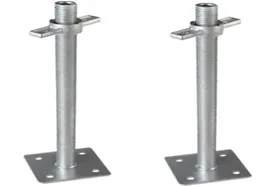
Mar . 07, 2025 05:04
Back to list
Scaffolding
Scaffolding systems are integral to construction and maintenance projects, offering the necessary support and access for workers. Understanding the different types of scaffolding systems is crucial for ensuring safety, efficiency, and cost-effectiveness in various projects. Here, we explore some of the most widely used scaffolding systems, drawing from years of industry expertise and authoritative insights.
And then there's the Suspended scaffolding system, a unique option engineered for working at varying heights without erecting full scaffolding. Suspended from the top of a building by cables or ropes, this system is commonly seen in window washing operations or exterior painting jobs on high rises. With a focus on safety, modern suspended scaffolding systems incorporate advanced features like motorized systems and enhanced safety harness attachment points. Lastly, for projects demanding specialized applications, such as nuclear facilities or complex industrial plants, bespoke scaffolding solutions are often custom-designed. These projects benefit from expert insights and tailored systems that handle unique structural challenges. It's essential to collaborate with scaffolding specialists to develop these solutions, ensuring that they align with specific project requirements and meet rigorous safety regulations. In conclusion, selecting the right scaffolding system hinges on understanding the specific demands of your project. Each type offers distinct advantages, from the unparalleled flexibility of Tube and Coupler scaffolds to the efficiency of the Modular systems. Frame scaffolding provides a straightforward, economical solution for smaller projects, while Suspended scaffolding addresses needs in vertical environments. Investing in high-quality systems and skilled erection teams ensures a safer and more efficient construction process. Continuous advancement and innovation in scaffolding designs strengthen their role as a vital component in modern construction, advocating for safer, quicker, and more efficient project execution across diverse sectors.


And then there's the Suspended scaffolding system, a unique option engineered for working at varying heights without erecting full scaffolding. Suspended from the top of a building by cables or ropes, this system is commonly seen in window washing operations or exterior painting jobs on high rises. With a focus on safety, modern suspended scaffolding systems incorporate advanced features like motorized systems and enhanced safety harness attachment points. Lastly, for projects demanding specialized applications, such as nuclear facilities or complex industrial plants, bespoke scaffolding solutions are often custom-designed. These projects benefit from expert insights and tailored systems that handle unique structural challenges. It's essential to collaborate with scaffolding specialists to develop these solutions, ensuring that they align with specific project requirements and meet rigorous safety regulations. In conclusion, selecting the right scaffolding system hinges on understanding the specific demands of your project. Each type offers distinct advantages, from the unparalleled flexibility of Tube and Coupler scaffolds to the efficiency of the Modular systems. Frame scaffolding provides a straightforward, economical solution for smaller projects, while Suspended scaffolding addresses needs in vertical environments. Investing in high-quality systems and skilled erection teams ensures a safer and more efficient construction process. Continuous advancement and innovation in scaffolding designs strengthen their role as a vital component in modern construction, advocating for safer, quicker, and more efficient project execution across diverse sectors.
Share
Next:
Latest news
-
Top Scaffolding Solutions for Every Construction ProjectNewsApr.21,2025
-
Scaffolding Solutions for Every ProjectNewsApr.21,2025
-
Innovative Construction Solutions for a Stronger FutureNewsApr.21,2025
-
Essential Steel Keel Solutions for Maximum Protection and PerformanceNewsApr.21,2025
-
Building a solid foundation: The importance of high-quality concrete reinforcement accessoriesNewsApr.21,2025
-
Effective Reinforcement for Stronger StructuresNewsApr.21,2025
-
The Essential Role of Timber and Steel in Modern ConstructionNewsMar.10,2025
Related Products










